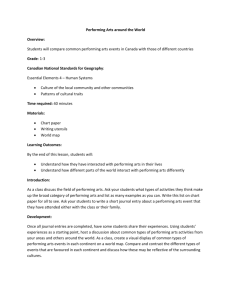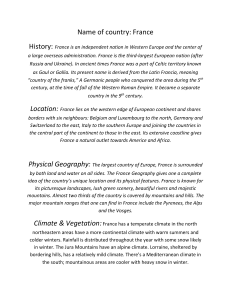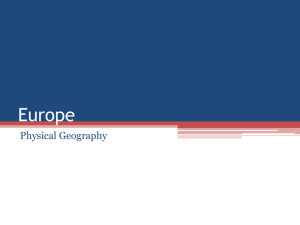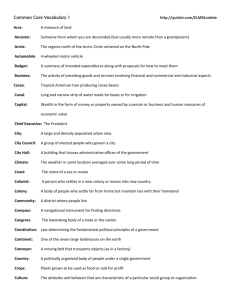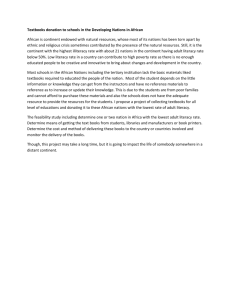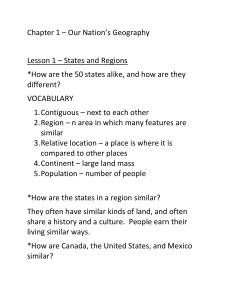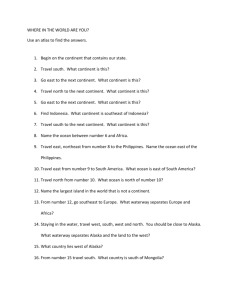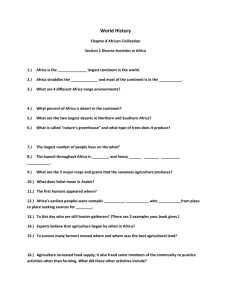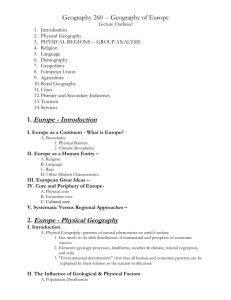The Geography of Europe
advertisement
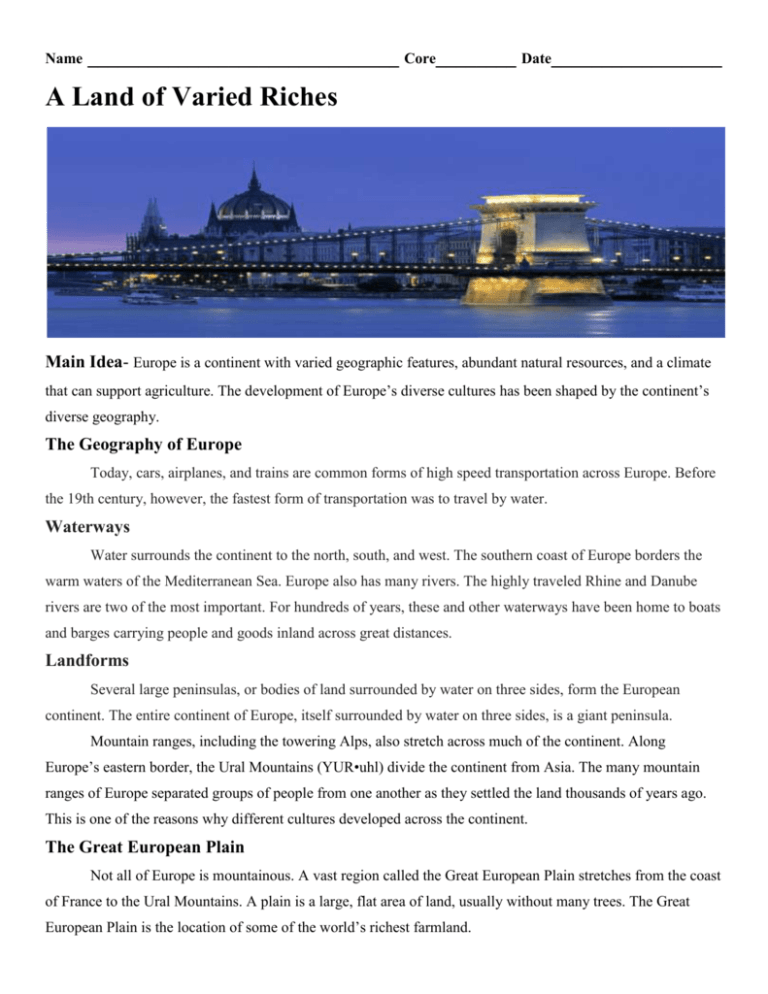
Name _______________________________ Core________ Date_________________ A Land of Varied Riches Main Idea- Europe is a continent with varied geographic features, abundant natural resources, and a climate that can support agriculture. The development of Europe’s diverse cultures has been shaped by the continent’s diverse geography. The Geography of Europe Today, cars, airplanes, and trains are common forms of high speed transportation across Europe. Before the 19th century, however, the fastest form of transportation was to travel by water. Waterways Water surrounds the continent to the north, south, and west. The southern coast of Europe borders the warm waters of the Mediterranean Sea. Europe also has many rivers. The highly traveled Rhine and Danube rivers are two of the most important. For hundreds of years, these and other waterways have been home to boats and barges carrying people and goods inland across great distances. Landforms Several large peninsulas, or bodies of land surrounded by water on three sides, form the European continent. The entire continent of Europe, itself surrounded by water on three sides, is a giant peninsula. Mountain ranges, including the towering Alps, also stretch across much of the continent. Along Europe’s eastern border, the Ural Mountains (YUR•uhl) divide the continent from Asia. The many mountain ranges of Europe separated groups of people from one another as they settled the land thousands of years ago. This is one of the reasons why different cultures developed across the continent. The Great European Plain Not all of Europe is mountainous. A vast region called the Great European Plain stretches from the coast of France to the Ural Mountains. A plain is a large, flat area of land, usually without many trees. The Great European Plain is the location of some of the world’s richest farmland. Climate The Gulf Stream brings warm air and water to Europe, the winters are still severe in the mountains and in the far north. In some of these areas, cold winds blow southward from the Arctic Circle making the average temperature fall below 0°F in January. The Alps and the Pyrenees, however, protect the European countries along the Mediterranean Sea from these chilling winds. The summers in the south are usually hot and dry, with an average July temperature around 80°F. This makes the Mediterranean coast a popular vacation spot. Elsewhere in Europe, in all but the coldest areas of the mountains and the far north, the average July temperature ranges from 50°F to 70°F. Natural Resources Europe has a large variety of natural resources, including minerals. The rich coal deposits of have helped to make that area one of the world’s major industrial centers. Russia and Ukraine have large deposits of iron ore, which is used to make iron for automobiles and countless other products. Europe also has rich soil and plentiful rainfall. The average precipitation for the Great European Plain, for example, is between 20 and 40 inches per year. Few parts of the continent are too cold or too hot and dry to support some form of agriculture. These characteristics have made Europe a world leader in crop production. __________________________________________________________________________________________ Questions 1. Identify: (a) Mediterranean Sea (b) peninsula (c) Ural Mountains (d) plain 2. How does the Gulf Stream affect the climate of Europe? 3. What separates Europe from Asia? 4. How do waterways, such as rivers and seas, strengthen trade in Europe?
